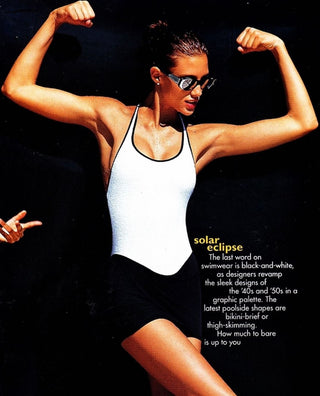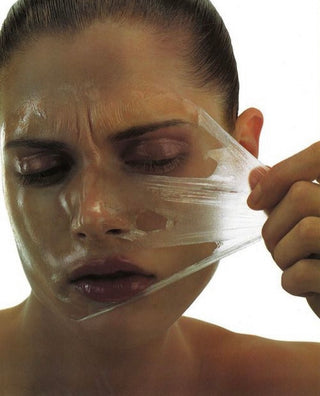
By: @drmelissacugliari
Ultraviolet (UV) radiation from sun exposure is one of the leading causes of a damaged skin barrier. UVA and UVB are two forms of ultraviolet rays: UVA is primarily responsible for visible signs of aging (think A for aging) and causes fine lines and wrinkles, while UVB is primarily responsible for burning (think B for burning) and giving the skin a tanned appearance.
Too much UV exposure leads to increased transepidermal water loss and premature aging of the skin. UVA in particular also causes the loss of collagen and elastin which are two components of the skin that keep it strong, bouncy and youthful in appearance. Over time, UVA and UVB rays cause cellular damage that can eventually lead to skin cancer. Because of this, sun protection is essential for all individuals, not just for those who are concerned with minimizing the signs of aging.
Depending on your skin type and the amount of melanin your skin contains, your susceptibility to burning varies. Individuals with darker skin tones have more melanin in the skin which is naturally protective, meaning these individuals have a lower risk of skin cancer. With that being said, they still absolutely require adequate sun protection to prevent skin cancer. Skin cancer in individuals with darker skin tones is generally more severe as their prognosis is statistically poorer and they have higher mortality rates.
It is important to remember that not all means of sun protection are equal. Certain ingredients in sunscreens have been proven to be more harmful than good. So, what’s the safest and most effective way to protect your skin? Keep reading to find out.
Physical Barriers
Clothing and hats are two excellent ways to protect the skin from UV rays. The protective factor of clothing against UV radiation is called UPF (ultraviolet protection factor) and different materials will have different UPFs. For example, denim has a UPF of 1700 and prevents almost all sun radiation from reaching the skin. Sunglasses are another great tool to protect your skin from UV rays.
Sunscreens
Not all sunscreens are created equal and it is important to educate yourself on what to look for when selecting a sunscreen.
Sunscreens are rated based on their SPF (sun protective factor) which stands for the percentage of UV rays filtered by sunscreen. SPF 15 provides about 93.3% protection while SPF30 offers approximately 96.6% protection. SPF does not refer to how long you are protected for.
The Environmental Working Group suggests looking for a sunscreen with an SPF between 30 to 50, but keep in mind, SPF does not mean you are protected from all UV rays. Do not use sunscreen as a way to induce a false-sense of security in the sun. Always be mindful and do not sit in the sun for prolonged periods of time, especially during peak hours (10AM to 4PM).
SPF is not the only factor to consider when selecting a sunscreen, you should carefully assess product labels before using. Sunscreen is considered a drug and should include a drug fact label (a requirement by the FDA). But even if a sunscreen has a good SPF and a drug fact label, you should always read through its ingredients.
There are two categories of sunscreen to consider: chemical and mineral sunscreens.
Mineral Sunscreens
I absolutely recommend using a mineral sunscreen. The natural active ingredient, zinc oxide, protects against UVA and UVB rays by physically blocking and reflecting the radiation. In other words, they prevent the UV rays from being absorbed into the skin. Newer formulations on the market have less white cast (some have none) and are easy to apply/blend. Look for non-nanoparticle sunscreen for the most stable and safest option as these are also less irritating to the skin. I would also recommend avoiding the use of sunscreens with titanium dioxide, an ingredient that does not break down nor does it get excreted by the body the same way as zinc oxide does. Although the research around the safety of titanium dioxide is still in its infancy, some studies suggest it may be hazardous to your health. Furthermore, zinc oxide itself is also anti-inflammatory and calming to the skin, making it a less irritating option than chemical sunscreen formulas.
It is also helpful to apply topical antioxidants along with your sunscreen for added protection. Antioxidants* help to scavenge free radicals that are created by UV rays that manage to get past your sunscreen and into the skin.
Chemical Sunscreens
Chemical sunscreens work by absorbing UV radiation, transforming it, then re-emitting it as heat. Because of this, people prone to irritation, dermatitis, rosacea or other conditions that cause facial redness should avoid these formulations since the heat can be aggravating.
I do not recommend chemical sunscreen formulas to patients because they are potentially hazardous to their health. One reason is because many ingredients in chemical formulas degrade with sun exposure and can pose serious problems as a result. After approximately two hours, chemical formulas begin to break down and go from protecting the skin from the sun’s DNA damaging capabilities to becoming a source of DNA damage itself. These formulas must be removed and reapplied every two hours for this reason. Applying antioxidants is also suggested to optimize protection and to minimize cellular damage. Lastly, many chemical ingredients only protect against UVA or UVB rays, so if you decide to use a chemical sunscreen, the formulation should contain a combination of chemical UV absorbers and be labeled as “broad spectrum”.
Overall, the safety of these formulations is questionable. I would always choose a non-nanoparticle, zinc oxide mineral sunscreen over a chemical sunscreen to veer on the safe side and as a general rule, avoid powder or aerosol sunscreens because the airborne particles can damage lung tissue when inhaled.
*Regardless of the type of sunscreen you use, I always recommend applying antioxidants to the skin alongside sunscreen application. Antioxidants are reparative particles that help the skin heal from cellular damage (which UV light causes). Talk to your naturopathic doctor about which antioxidant formulation may be appropriate for you.
Protection from the Inside Out
Eating a diet rich in fruits and vegetables, high-quality fats and organic animal products will maintain a healthy system, encouraging cellular repair in all organs, including the skin. While it is important to protect the skin externally, the importance of this internal work cannot be understated, especially if you want to prevent or reduce melasma, pigmentation, fine lines and wrinkles.
Please note that many skincare products (i.e. cleansers, toners, lotions, serums, peels/exfoliants, prescription medications, etc.) render the skin more prone to damage from UV light. Always ensure you are using sunscreen to protect the skin. As always, do your research and review your products with a qualified professional to ensure all of your unique needs are met.
References:
https://www.ncbi.nlm.nih.gov/pmc/articles/PMC3423755/
https://academic.oup.com/aje/article/180/12/1168/2739191?login=true
https://www.ncbi.nlm.nih.gov/pmc/articles/PMC6831754/
https://pubmed.ncbi.nlm.nih.gov/15191542/
https://www.researchgate.net/publication/6780251_Sunscreen_enhancement_of_UV-induced_reactive_oxygen_species_in_the_skin
https://www.ncbi.nlm.nih.gov/pmc/articles/PMC5928335/















